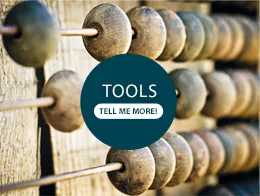Nearly 10 years ago, Tim Freundlich walked up five floors to the top level of a London warehouse covered in pigeon poop not far from the Angel Underground Station in the Islington borough, where he met an anthropologist and a band of misfit do-gooders — professionals and creatives of all sorts scattered about a workspace designed for interaction and collaboration. “The anthropologist said, ‘Over there is a green building designer, and there is a philanthropist, and here’s somebody doing fair trade fashion,'” Freundlich recalls. The rawness of the frenetic, borderline chaotic spot captivated him. He wasn’t quite sure what he was seeing. But he knew he wanted to be a part of it.
The anthropologist was Jonathan Robinson and the warehouse was the first iteration of what’s become known as Impact Hub. Created in 2005, Impact Hub was a co-working space before anyone knew what co-working was. By 2007, the London space grew from about a dozen users to more than 200. People like Freundlich, who had heard of the space, came in droves, often from great distances, to learn how they could create similar hubs in their respective cities — like a do-gooder pilgrimage to Social Impact Mecca. By 2008, nearly a dozen hubs had surfaced around the world, including a second London location, multiple locations in Europe, even one in Johannesburg, South Africa — though none, at that time, in the U.S. Eight years later, there are 86 Impact Hubs spanning five regions, with 21 more in the making.
GROWING UP ‘ENSCONCED IN A BUNCH OF INTENTIONAL COMMUNITY FOLKS’
Many could have driven the introduction of Impact Hub to U.S. soil. But few would have been more prepared and accepting than Tim Freundlich of such a radical way of operating a workspace. The 48-year-old grew up bouncing around co-ops, group houses, and alternative high schools in what he now describes as “a hyper-countercultural cooperative, hippie context” in New Haven, Connecticut. “I grew up very much ensconced in a bunch of intentional community folks who were starting up enterprises and co-ops,” Freundlich says of his early days.
He also grew up surrounded by socially minded parents and family friends. “I’m a true second-generation social entrepreneur, even though we didn’t have the language of that growing up,” Freundlich tells We See Genius in a conference room appropriately named “Hubble” inside Impact Hub San Francisco. Indeed, in 1982 Freundlich’s father, Paul, founded what is now called Green America. According to its website, the Washington, D.C.-based nonprofit, known as Co-op America until 2009, has a mission to “harness economic power — the strength of consumers, investors, businesses, and the marketplace — to create a socially just and environmentally sustainable society.” Paul Freundlich also was instrumental in the formation of Calvert Foundation, one of the largest impact investing foundations, which would eventually hire the younger Freundlich for an internship. Tim’s mother was an artist, he says, and still is today.
FROM SELLING WINE IN NEW YORK CITY TO BEING THE ‘GLORIFIED INTERN’
It wasn’t until Freundlich entered college at Wesleyan University in Middletown, Connecticut that he realized there is a world outside of the intentional community counter-culture. Living in a commune, spending Saturdays packaging bulk nuts at the co-op, and going to a school run by your parents wasn’t the norm, the only-child soon learned. It was like being thrown into a “different discourse,” Freundlich says now. “The whole foundational taxonomy and rules to the game was absent.” It was a shock, but it could have been worse, Freundlich says: Wesleyan is a liberal arts university known as much for activism as academics. “I can only imagine what would have happened if I went to an actual buttoned-down college,” he says, still sounding in awe of the idea. “We were taking African dance and drumming, which were some of the most popular classes.”
As a film major from Connecticut, Freundlich joined “half the graduating class” and huffed it to New York City to start a burgeoning career in film work, particularly documentaries. Except he ended up selling wine to restaurants. “That’s when I realized the world of New York,” Freundlich says. “People were just going after money and were really busy and hyper and there was not a lot of connectivity or social contract stuff. That was where I slipped into the more conventional world for a period of time.”
It’s tough to conjure images of a free spirit from rural Connecticut, who stands well over 6 feet, living in a tiny apartment in one of the world’s most imposing metropolitan centers, stuck in a dead-end job selling wine to city eateries. He couldn’t imagine it for long, either. At 26, Freundlich packed his motorcycle to move to Washington, D.C., where he accepted a “glorified intern” position for $22,000 a year with Calvert Foundation — the nonprofit his father worked with when it was founded in 1988.

Inside Impact Hub San Francisco. Photo by Nathan Allen
CALVERT’S COINCIDING RISE WITH IMPACT INVESTING
Calvert Foundation is the impact-focused spinoff of Calvert Investments, a $15 billion investment fund founded by Wayne Silby in 1976. According to its website, Calvert Foundation was founded after Calvert Investments noticed a strong interest from its clients in investing directly in underserved communities. In its nearly three decades of existence, Calvert Foundation has invested more than $180 million in about 200 nonprofits and social enterprises in 80 countries. Through its Community Investment Note program, individual and institutional investors may invest as little as $20 online or $1,000 direct to a “diversified portfolio of nonprofits, microfinance institutions, social enterprises, and loan funds that benefit underserved communities in the U.S. and around the world,” with up to a 4% return over one to 15 years. According to the most recent report, since the program’s inception in 1995 more than 15,000 investors have invested more than $800 million — all of which, the nonprofit’s website says, has been repaid. In 2014, Calvert Foundation reports its partners preserved or created more than 5,000 affordable housing units and more than 3,700 jobs, and served around 120,000 microfinance customers.
When Freundlich arrived in 1997, the Community Investment Note program was already two years old. He felt an immediate pull toward what was then known as socially responsible investing. Freundlich would spend the next decade working and growing in the space that became known as impact investing. Around 2006, knowing he “wanted to start some sort of edge-riding, new fund that was going to organize capital for social entrepreneurs,” Freundlich was granted a six-month sabbatical, during which he founded a “venture fund for good” called Good Capital.
Dubbed the “Little Berkshire Hathaway for Good” on Freundlich’s LinkedIn page, Good Capital began raising money from foundations and individuals who were looking to “go more all-in with their capital and participating in making the world the kind of world they wanted to see,” Freundlich says. By the time Freundlich returned from his sabbatical, Good Capital had scrounged up a multi-million-dollar fund.
FINDING THE FIRST HUB
Freundlich was looking for potential organizations to invest in during a trip to London when a friend told him to check out “this thing” in Islington. “The person who tipped me off to it said, ‘There’s an anthropologist and crazy people working together in a five-floor walkup, pigeon poop-encrusted warehouse. But it’s really cool. They hang out there and work together,'” Freundlich remembers with a smile. “And I said, ‘Well, that sounds like my whole life.'”
So, with about four hours to kill before he needed to catch his flight from London’s Heathrow Airport, Freundlich checked it out. “I walked up the five floors to this pigeon poop-encrusted warehouse and met with this anthropologist,” he says. And he was enamored, both with the concept and the potential investment opportunity.
“I said, ‘This is so interesting,'” Freundlich recalls of his initial conversation with Jonathan Robinson. “And he said, ‘Yeah, what if these were everywhere?'”
GLOBAL HUB GROWING PAINS
Hub London was founded by Robinson and a team of coworkers in 2005. Besides a similar community called the Hat Factory founded by San Francisco-based programmer Brad Neuberg, no such concept really existed — at least in any organized fashion — on the planet. “Suddenly there is this business idea of these franchise co-working spaces,” Freundlich explains. “Nobody even knew the word ‘coworking’ at this point. There was no WeWork.”
That would soon change. The incredibly rapid growth of Hub spaces specifically and coworking in general led to both exuberance, headaches, and confusion. It was almost too good. Needing some sort of governing body, or at least some organizing principles, Robinson and stakeholders created a hybrid business model called “social franchise.” From then on, new hubs would pay a joining fee and relinquish a portion of their revenue to the global Hub organization. In exchange, they would receive branding rights to the Hub network and all types of support from a central team, based in London, to help grow their impact. Through inspirational storytelling and a global Hub Crusade, Robinson created a global franchise that Freundlich nearly invested in.
But he didn’t. “It was the best investment I never made,” he says now. And he was right. Soon, individual Hubs stopped paying their fees, and Robinson faced a serious cashflow problem.
“It was like a car roaring down a really steep hill. But the engine wasn’t running and there was no one in control,” Brad Krauskopf, founder of Hub Melbourne, told Michel Bachman, the founder of Hub Zürich, in a very detailed report on the issue.
“If you ask me, the organization should have folded at that time,” Krauskopf continued. “I have no practical understanding of why it didn’t, except for the power of a distributed network: Even if you take out some of the major nodes, it still manages to keep on working because of all the interconnected relationships. What you got was one of the most complex ecosystems that I’ve ever seen anywhere. And I’m still amazed that we managed to keep it all together.”
UNITED STATES, MEET THE FIRST HUB

Freundlich next to a relic he brought all the way from his New York City apartment. Photo by Nathan Allen
Just before the upheaval, Freundlich, Kevin Jones, and Rosa Lee Harden were in the midst of creating Mission Hub in 2008, the operating company that would start the first U.S. Hub. Despite passing on the investment, Freundlich had “fallen head over heels” for the idea of a Hub space. “I wanted to have that in San Francisco,” he says matter-of-factly. “This did belong everywhere, so I thought we better just get about doing that.” And what better place to tap into his progressive roots than nearby Berkeley, California?
Freundlich and his team came up with a list of 50 people who were inspiring, compelling — people they simply wanted to be around. “If you think, ‘We’ve got to find 50 people who all share some common DNA and passion for making the world better who all have their own networks,’ that’s not that daunting. We knew there was an incredible amount — by number and diversity — of social entrepreneurs in the Bay Area. So that’s what we did. We started mounting a one-tea-by-one-coffee-by-one-sandwich shared campaign over six months.”
By the fall of 2009, Freundlich and crew had found their platoon of 50 and set up a “test kitchen” in the David Brower Center on the periphery of the University of California-Berkeley campus, near the Downtown Berkeley Bay Area Rapid Transit stop. “We probably put way too much energy and a little too much money in a test spot,” Freundlich says now, laughing. “Whether or not they actually needed a working space, that didn’t matter.” Indeed, the point was to build a massive and somewhat organized do-gooder network. “We built a really interesting pallet in which we could paint a lot of really interesting networks,” Freundlich says of the original group.
RAPID GROWTH — AND THE NEAR GLOBAL DISINTEGRATION OF THE HUB NETWORK
Impact Hub’s history, existence, and eventual prosperity in the U.S. was steeped in irony. On one hand, momentum in the Bay Area was rapid. Each month after opening in Berkeley, Freundlich says, about “a dozen or so” new people signed up. “So 50 became a couple hundred by the end of six months.” By the spring of 2010, the network had expanded beyond capacity at the Berkeley spot and Impact Hub Berkeley morphed into Impact Hub Bay Area, which now included a massive space on the ground level of the Chronicle building in San Francisco’s SoMa area, which eventually would be called Impact Hub San Francisco. In six months, 350 people were using the space.
Meanwhile, the global network was falling apart. Leaders of Hubs from around the globe met in Amsterdam in early 2010 for the conference equivalent of an emergency room surgery. Something had to be done before the entire thing disintegrated. After nearly a year of meeting and discussions, the social franchise model was rebranded as a co-ownership model. Every Hub would share Hub Association assets under a “one Hub, one vote” governing model. In early 2011, Hub members convened at Hub Madrid to celebrate the new governing model. In 2013, the name and brand of Impact Hub were born.
NEW DIGS ON THE WAY
Things hummed along in the Bay Area, and soon the ground floor of the Chronicle building wasn’t enough. The Hub punched through to the second floor to fit its growing population. Freundlich and Mission Hub next set up Impact Hubs in New York City and Washington, D.C. Then Mission Hub made seed investments in Impact Hubs to pop up in nearby Oakland, California — and then Boulder, Colorado, Los Angeles, and Seattle. Between starting a Hub with his two Mission Hub co-founders or investing in others, Freundlich played a role in the establishment of eight of the 14 Impact Hubs now operating in the U.S.
Back in the Bay Area, about 750 people now use the San Francisco Hub, which Freundlich says is about maximum capacity. “This place is actually at capacity, and has been for two years,” he says. In the works is a move to a space closer to San Francisco’s Mission District, he says, to a space 60% larger than the one they inhabit now that boasts an outdoor 4,000-square-foot biergarten and “collaboretum.” Freundlich says they will be moved in by the end of this year. The three Bay Area Hubs are now known collectively as Impact Hub Bay Area.

Christie George, director of New Media Ventures, worked out of the London Hub while earning her MBA. Now she operates New Media Ventures out of a second-floor office at Impact Hub San Francisco. Photo by Nathan Allen
FROM SOCK MONKEYS AND SOFTBALL TO A SPOT AT IMPACT HUB BAY AREA
The San Francisco space certainly buzzes with activity. A range of personalities and backgrounds zip along from the conference room to the tea station to couches spread out around the open brick rooms.
In a messy corner office on the second floor, Christie George types away on her Macbook. George is the director of New Media Ventures, a national network of angel investors whose goal is to turn traditional media upside-down by investing in media and tech companies with a progressive, political bent. George can’t remember how, but she found the original London Hub while working toward her MBA at the University of Oxford’s Saïd Business School. “I suspect someone said, if you are a social entrepreneur and you are moving to London, you should go to this place,” she says. “And it was exactly how Tim (Freundlich) described it. It was the fifth floor of this warehouse in Angel on a back street. Very community-oriented. It was a very homey space.” Also, George confirmed, there was pigeon poop.
George and her partner used the grungy yet charming space to co-launch their advertising and media buying platform, Louder, which still exists today. “It’s really, truly a community space,” George says of the original Hub. When London Hub member’s friend was diagnosed with cancer, George recalls, other members rallied around by hosting a sock monkey fundraising event. Eight years later, she still has one of the sock monkeys she made during the event. “It had nothing to do with my job, or anything. But it was truly about, ‘How can we come together around this person who is going through a hard time and make these sock monkeys?'” she explains.
George found the Bay Area spot in a similar way. During her time at the London Hub, the community decided to participate in a softball game against another organization. But it was England and no one really knew what softball was or how to play. “My husband and I and this other guy were the only ones who knew how to play softball,” George recalls. She said the “other guy” was a “nice guy” but that she never really thought about him after the game. When George and her husband moved to the Bay Area and George was starting at New Media Ventures, she received a phone call from a friend. “She said, ‘There’s this guy sleeping on my couch and he’s interviewing for a job at that thing you’re always talking about.'”
That “thing” was Impact Hub San Francisco, and the guy sleeping on the couch was the same one George had played softball with a couple years prior. His name was Tim Nichols and he was interviewing for the managing director position at Impact Hub Bay Area, where he continues today.
George joined the community in February of 2010 and remembers sanding some of the first tables to be used in the SoMa location. She’s also been able to hire contractors in the space to develop and design New Media Ventures’ website. “It’s been a really great source of talent for us,” she says.
A WELCOME SPOT FOR NONPROFITS, TOO
For Alex Bernadotte, Impact Hub Bay Area has been a welcome source of flexibility and a relatively low workspace cost. A first-generation college student, she launched her nonprofit, Beyond12, in 2009 with a $1.3 million nod from her former employer, NewSchools Venture Fund. The venture serves other first-generation college students in the U.S., “acting as a data and service bridge between K-12 and higher education,” and uses a blended revenue model that relies on foundation donations and grants as well as payments from school districts and universities.
For Bernadotte and her nonprofit, a cheap month-to-month rent was incentive enough to move. “Rather than incurring a long-term lease that would force us to be locked into something that we may or may not be able to honor, depending on our financial outlook, the flexibility of being in a place like the Hub, which was not at the market rates and on a month-to-month lease, without the huge overhead of real estate, was very attractive,” Bernadotte says.
She began working in the space in 2010 and the next year moved Beyond12 to a first-floor office full-time. The office, one of the larger ones at the Hub, has been a welcome spot for both Bernadotte and her “young” hires, she says. “It felt like we had instant-culture and instant-community, even while we were growing a very small team,” Bernadotte says of the greater Hub community, which she describes as a “baked-in social network.” After a long day, for example, she didn’t feel as much pressure to organize a happy hour when other Hub members were doing it anyway. She’s also been able to hire website developers and work closely with them in the same space.
WHY THE IMPACT HUB IS LIKE AN iPHONE
Pricing plans at the San Francisco Hub run from $500 annually for a very basic membership to “contact us for availability and pricing” for dedicated desks and offices. At the Mission Hub, membership and rent make up about half of the Hub’s income, Freundlich says. Another third comes from events like the annual Social Capital Markets Conference held each year in San Francisco. The remaining revenue stream comes from a hodgepodge of meeting room rentals and programmatic partnerships, Freundlich explains.
“I don’t think that will be the long-term pie,” he says. “But I think that is where we are now.”
He continues: “Think about your iPhone. When you got it, you thought it was for talking. Then there is texting. And then Angry Birds and maps and Yelp. And it’s all of these application utilities on top of your basic piece of hardware and its commodity use that are driving 80% of its value.” Freundlich believes Impact Hubs are similar. “I view this as a platform in which a whole slew of applications will emerge over time,” he says. “And that’s where the exponential value is.”
‘LIKE TAPESTRY WRAPPING THE EARTH’
Freundlich sees the model as the way of the future, especially for ImpactAssets, the impact investing fund that came out of his sabbatical from Calvert Foundation. Even though he didn’t end up investing in the Hub model, a fund was born that now operates alongside Calvert Foundation, and physically out of Hubs in San Francisco and Washington, D.C. Freundlich also sees the model as a practical way of the future to minimize footprint.
“That’s the Hub model,” he says. “It’s like, are we crazy? What are we doing sitting on 300 square feet a person for your conventional, low-volume office? Plus, there’s empty conference rooms, plus a bathroom, plus a kitchenette, and a reception area. You know, taking up 1,000 square feet for three people. And then, you know, one of them doesn’t have to come in except for Tuesdays and when they (otherwise) have to, so they’re telecommuting. That’s just sustainability. Minimizing kilowatt hours per butt in seat. All of that stuff, it just doesn’t make a lot of sense.”
At the Hub, Freundlich says, you’ve got people using 45 or 50 square feet each. “In fact, you’ve got three butts in every seat,” he says.
And for someone raised in an intentional community, having a tribe just makes sense.
“People are all a part of a global tribe,” Freundlich says. “Even though we are separate, we are starting to understand each other as part of one movement and one group of creatives and entrepreneurs. And it’s pretty differentiated because it’s already spreading so nicely as a network of nodes — like tapestry wrapping the Earth.”



